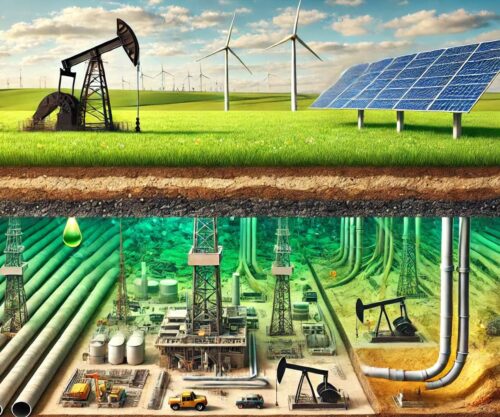
Forbes posted an article, titled “What You Need To Know About Climate Change In 2025,” which claimed that global warming is causing an increase in severe weather conditions around the world, citing NASA as the source. [emphasis, links added]
This is false.
The data do not show that severe weather is becoming worse or more common; computer models are simply predicting that it may.
After a pretty mild introduction explaining that there is a need for a “new American narrative for talking about climate change,” Forbes makes this set of claims:
Global warming has consequences for weather. According to NASA, global warming “is impacting extreme weather across the planet. Record-breaking heat waves on land and in the ocean, drenching rains, severe floods, years-long droughts, extreme wildfires, and widespread flooding during hurricanes are all becoming more frequent and more intense.” If global warming continues, these effects will be even more severe, such as rising sea levels, which could put many U.S. cities underwater by 2050. The year 2050 is often cited by those who study climate change, trying to anticipate its effects and how to mitigate and adapt to global warming. The general scientific consensus is that in order to avoid the most serious consequences of global warming, the temperature rise should be kept to around 2°C or 3.6°F by 2050.
Climate change, by definition, has effects on the weather; climate is a statistical construct based on weather patterns over a certain period, usually 30 years.
However, the NASA declaration that Fobes cites is not supported by data that NASA itself collects and makes public.
This [excerpt above] mentions six extreme weather-related threats and sea level rise.
While 2023 and 2024 were hot largely due to the effect of a natural El Niño in the Pacific, there is quite a bit of uncertainty as to whether or not the number and severity of heatwaves are indeed increasing.
From a bird’s-eye view, looking at the number of 95+ degree days in the United States, most of the country is seeing a decline in those very hot days, not an increase.
This dataset from the National Climate Assessment indicates that much of the change in average temperatures is driven by a decline in “very cold” days and warmer nighttime temperatures. (See figure below)

The warming nighttime temperatures are particularly interesting because this suggests that the urban heat island effect is a factor influencing the temperature readings recorded at surface stations, as described in this Climate Realism guest post.
Regarding rains and flooding, this is again too vague and broad a claim to really drill down on, as increases in flooding could mean something different from one place to another, like an increase in urbanization and problems with local water handling.
The IPCC doesn’t forecast that any flooding signal will emerge in either 2050 or 2100 under even the most extreme climate modeling scenario.
It is true that the northern hemisphere, especially the mid-latitudes, appears to be seeing higher average precipitation.
However, as discussed in this Climate Realism post, the U.N. Intergovernmental Panel on Climate Change (IPCC) does not link rising precipitation to flooding, saying that no connection has emerged from the data.
Also, the IPCC doesn’t forecast that any flooding signal will emerge in either 2050 or 2100 under even the most extreme climate modeling scenario.
Paradoxically, Forbes also cites NASA to assert that years-long droughts are becoming more frequent and intense, but data specifically refutes this claim.
There have been several different regions over the last few years that the media claims have suffered unprecedented droughts, but each time, historical data proves these claims false, showing that more severe and longer-lasting droughts have occurred well before modern warming.
For example, here are a few different locations Climate Realism discussed: here for the Amazon, here for the American West, and here for the Horn of Africa.
Finally, we get to wildfires, which is a particularly perplexing claim coming from NASA, considering its datasets on global wildfires show a decline in global burned area since the early 2000s, as discussed in Climate Realism here.
The decline in global wildfires has been recorded and reported by the European Space Agency, as well. (See the graph below)

Concerning hurricane-induced flooding, since data clearly show no increase in the number or severity of hurricanes or tropical storms amid the modest warming of the past century, it is simply misleading to claim changes in hurricanes are resulting in more flooding.
Attempts to determine whether or not recent storms have persisted longer over land than in the past are fraught with uncertainty and unanswered questions, as noted by a variety of expert scientists in the field.
Floods are exacerbated by human habitation and landscape alterations, yes, primarily as a result of infrastructure and land use changes. Poor water management, displaced wetlands, increased subsurface water withdrawal, and increasing amounts of impervious surfaces result in flooding from rainfall amounts that in the past would not have resulted in flooding.
Attribution to climate change is unwarranted, with such claims often relying entirely upon climate modeling based on many questionable built-in assumptions, rather than real-world data and trends.
On the question of flooding, once again, the IPCC finds no changes in pluvial (surface water) flooding related to precipitation.
Climate Realism has covered the complex issues concerning rising sea levels on multiple occasions here, here, and here, as a few examples. Seas are rising, but not at historically unusual rates. Any increase in coastal flooding is, once again, due to land compaction and subsidence, groundwater withdrawal, and increased development being put in harm’s way.
Late in the Forbes article, its author admits that the climate issue is “an extremely complex one and it has become highly politicized in the U.S.” and that there is “substantial variance in opinion about how serious of a problem it is now and will be in the future, what and how much should be done about it, who is responsible for dealing with it, and what costs should be incurred and by whom to address it.”
Gone is the certainty portrayed earlier in the article, and rightly so.
That there is an active debate concerning the causes and consequences of climate change is true, and the author is right that each person will have to decide for themselves how seriously to take the threat and what the appropriate response might be.
All in all, the Forbes piece is pretty vague and innocuous outside of the false confidence projected [about increasing severe weather events] based on some claims made by NASA that the author cites as authoritative.
The conditions that they say are getting more frequent and severe are not in fact doing so, at least if one believes the available historical and modern data.
While Forbes’ writers and editors may feel unqualified to disagree with claims they cite from NASA, they should at least have the journalistic integrity to ask the right questions and check the available data for themselves.
Read more at Climate Realism



















So if Forbes just becomes like the rest of the Climate Hucksters then no one should read their fake news